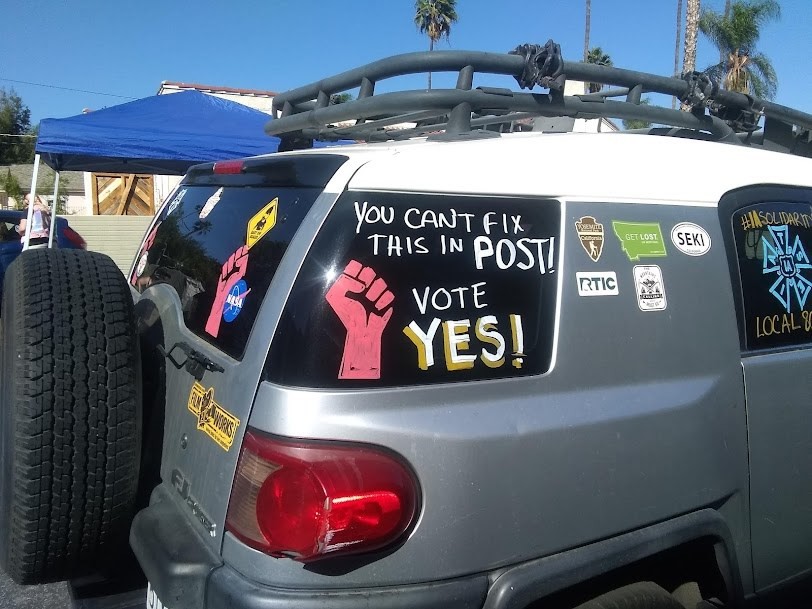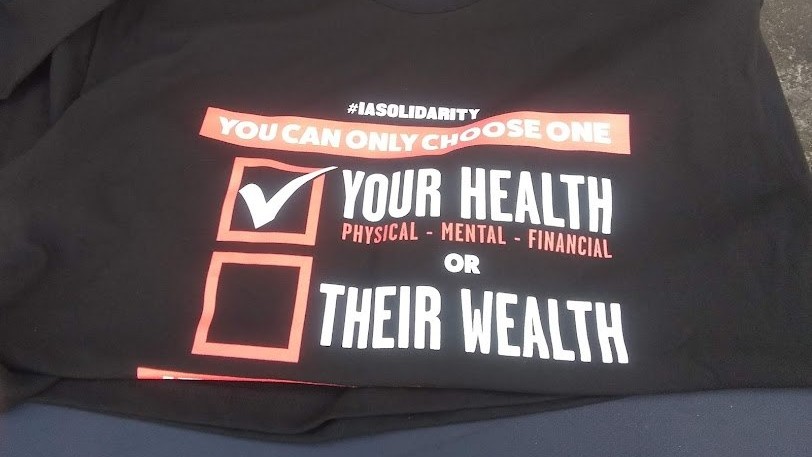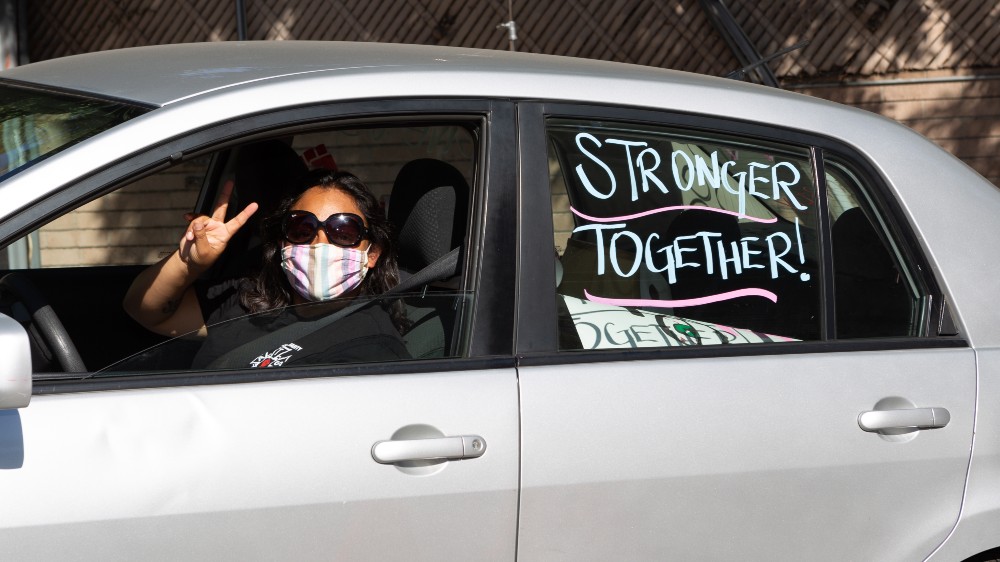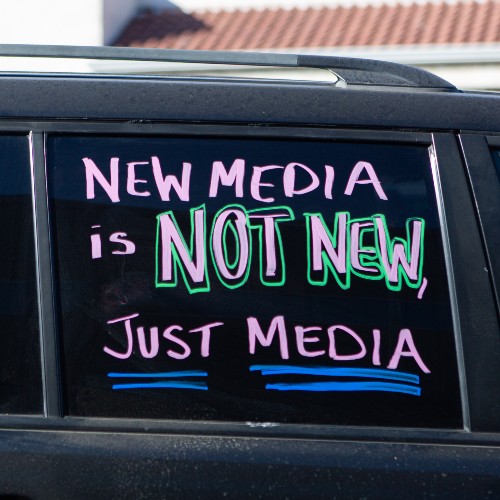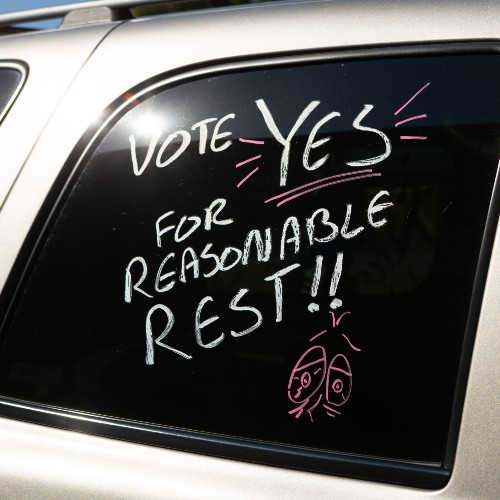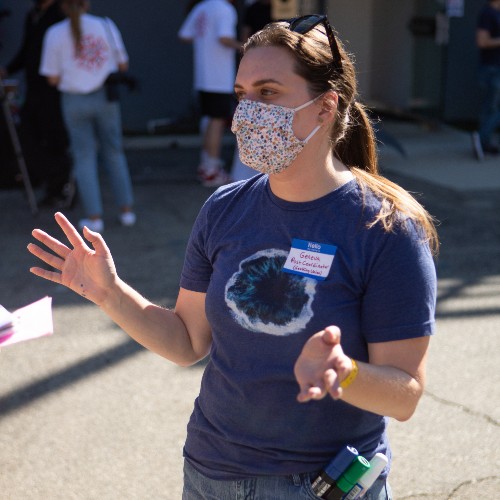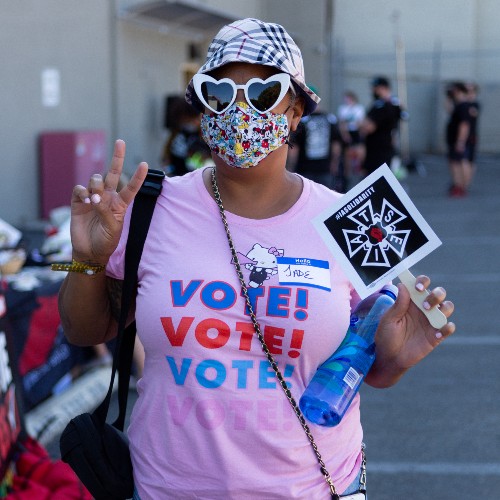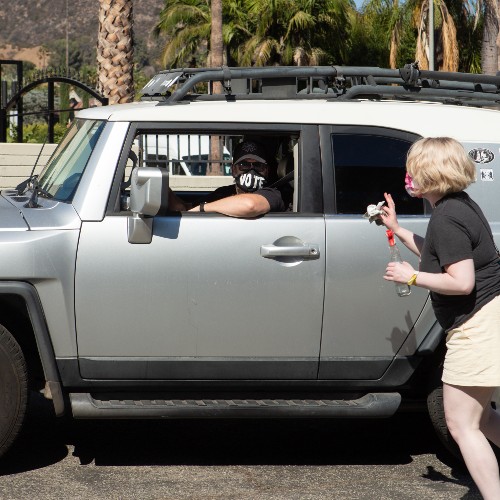“Everything old is new again…” as the song has it. And so, hello again, Below the Line. And hello, too, to an IATSE that’s decidedly more activist than any of its previous incarnations.
Indeed, the last time that craftworkers in Hollywood staged any kind of walkout, the IA was actually on the other side. Which is to say, that of the studios, about which, more in a minute. (One should note this was so long ago there was no television industry yet, and certainly no way to watch a movie on a telephone).
As you already know, IATSE voted over the first weekend of October to authorize the first nationwide strike in its 128-year history. A history that started with Vaudeville and Broadway, and has gone all the way up to the digital era, wherein the union announced that news on its very own Twitter feed.
And it was quite an impressive tally: a whisper shy of a 90% turnout, and a second whisper shy of 99% “yes,” on the strike question.

Not that you couldn’t already tell where the vote was headed. The Saturday before the vote announcement found us at a “Car Painting Drive-Thru” in the adjacent parking lots of IA Locals 700 and 600 — the Motion Picture Editors, and International Cinematographers Guild.
The idea was to build support and general in-the-trenches bonhomie by festooning all the arriving cars with slogans like “Your Health, or Their Wealth,” “Netflix, Let Me Chill,” and “You Can’t Fix This in Post,” along a lot of “Vote Yes!” proclamations, and stenciled clenched fists (at least one tellingly adorned with Wolverine-like talons). Thus, the message would be literally taken to the streets, in car-cultured L.A., from the suburbs of Simi to the lanes of Larchmont Village, and beyond.
The neighboring lots were along Sunset Boulevard, that same storied avenue from which William Holden narrates an entire Billy Wilder film after drowning in a swimming pool, and Gloria Swanson informs us that pictures are getting smaller. Which, getting back to phones again, may be true in a literal sense. But they’re also larger in that they’re everywhere you can find a pixelated screen with a power supply, and it is perhaps this voracious maw, and need for “content,” that is one of the drivers of our present impasse.
Which hopefully for all involved won’t remain an impasse too long: Word comes while this is being written, that the overwhelming support the IA drew is getting both sides back to the bargaining table Tuesday morning.
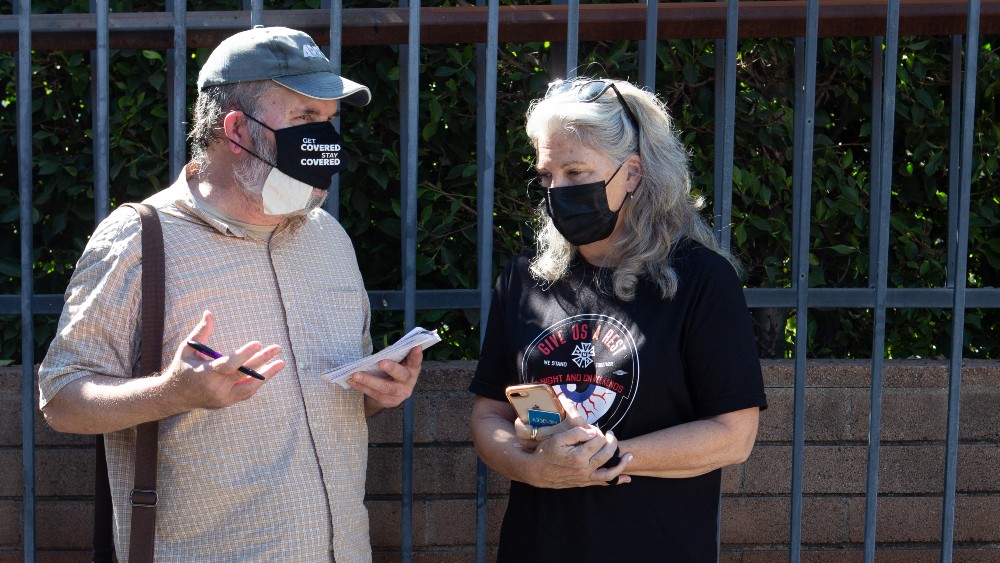
But the import may be “much bigger than the entertainment industry,” as Rebecca Rhine 600’s National Executive Director, told us, saying that one way to conceptualize was at stake was to think of an Amazon worker in a warehouse, or on a set, or an Apple employee assembling “iGear” in a warehouse, or working on a soundstage, all being involved in the same general economic struggle. “This is the fight,” she said, “and this is the moment.”
Her counterpart at 700, National Executive Director Cathy Repola, thought that the AMPTP would be pretty cognizant of the moment, too, once the strike authorization was announced. “I can’t imagine they wouldn’t be a bit concerned,” she said. The return to the table would seem to bear that out.

Especially since there is such widespread support for more humane working conditions for crew folk from other unions and guilds beyond the affected locals. Repola noted that a DGA member had arrived, looking to donate money, and the American Federation of Musicians had recently lent support.
SAG member and How to Get Away with Murder and Orange Is the New Black actor Matt McGorry was there, too, chatting with 700 board member Jason Brotman, who also chairs that Guild’s Young Workers Group (defined as being anyone 35 or younger).
McGorry said that while he felt “fortunate to have been working on sets for the last decade or so,” he increasingly felt bad for the crew working alongside him, with their even longer hours, especially knowing that he, at least, “would get time off… You can be in this industry as an actor,” he continued, “and not be aware of how unfair the treatment is for crews.”
That was, of course, the stuff of the IA’s Instagram account with its anonymous sharing of abusive producers, missed weddings, or childhood events by parents, being obliged to hurry back after major surgery, miscarriages, etc., or even deferring medical care during production. All because it’s supposed to be glamorous that someone else is surely salivating to take your job.
“All we’re asking for,” Brotman says, “is to be treated fairly.” Is wanting time off for family really such a subversive demand?

Well, the IA of yore might have thought so. We mentioned an earlier version of the union quite opposed to strikes. In March of 1945, the old Conference of Studio Unions called for a walkout, which the IA was then opposed to. On October 5th of that year — the anniversary of which falls as this article appears — the two sides came to blows in front of Warner Bros. Studios, with at least two dozen hurt in what has come to be called “Bloody Friday.” Local police showed up, from Burbank, L.A., and elsewhere, and as you might guess, they were not on the side of the strikers.
Tear gas was thrown, fire hoses unleashed, bricks hurled in response, arrests were made, and while a settlement was reached later that month, conflicts continued between the two labor groups. A Los Angeles Times article from the turn of this century by the late film historian Nora Sayre, describes the eventual lockout of CSU from the studios as the final blow “that defeated the CSU and — many thought — the possibility of enlightened unions. Ejected from the studios, some members of the CSU began to form rival unions, and the remains of the CSU were gradually scattered.”
Aided and abetted by Hollywood’s brewing McCarthyism, which had the support of the- IA head Roy Brewer, whom Sayre described as an “impassioned Red-baiter.”
And thus the conflation began of reasonable working conditions being perceived as somehow “un-American.” At least, until now. But many worms have turned since then.
What would Brewer have made of current IA President Matthew Loeb’s comments, in a far more recent edition of the Times, that — while he reiterated the main issues of “meals and breaks during the day; rest periods between shifts and on the weekends; a living wage for the lowest-paid people; and some appropriate adjustments to new media [streaming] based on its maturity”– also said that studios and tech companies have “made it about power, not reason, so my read is that if they see that the strike authorization is passed, then maybe they will return to reason and the bargaining table. But if it’s about power, that’s a problem.”
Problems right here in Angel City. And beyond.
Meanwhile, back along Sunset Boulevard, some folks were there to lend support who weren’t even in unions at all. One was a post-production coordinator on a streaming series connected to a quite notable “IP,” pulling together the music, editing, and VFX (wrangled, we might assume from visual effects workers also working without labor representation.) Her job category, she said, “doesn’t have union representation,’ and she was paying $400 a month out of pocket for her own health insurance, for starters.
It may take a village (and the passage of some decades) to make a successful labor movement, but organizing the still-many job categories that could likewise benefit from a revitalized movement is, she said, “a whole other village.”
Meanwhile, one village, union parking lot (actually, two of those), and strike authorization, at a time.
More soon.
 Mark London Williams is a BTL alum who currently covers Hollywood, its contents and discontents, in his recurring “Across the Pond” dispatch for British Cinematographer magazine, contributes to other showbiz and production-minded sites, and musters out the occasional zombie, pandemic-themed, or demon-tinged book and script, causing an increased blurring in terms of what still feels like “fiction.”
Mark London Williams is a BTL alum who currently covers Hollywood, its contents and discontents, in his recurring “Across the Pond” dispatch for British Cinematographer magazine, contributes to other showbiz and production-minded sites, and musters out the occasional zombie, pandemic-themed, or demon-tinged book and script, causing an increased blurring in terms of what still feels like “fiction.”
Mark London Williams’ Strike Alert column will appear every Tuesday. You can reach him to give him tips and feedback at [email protected]. He can also be found on Twitter: @TricksterInk
All photos by Photographer Ramin Yashid, except where noted. (Click on image for larger versions.)
